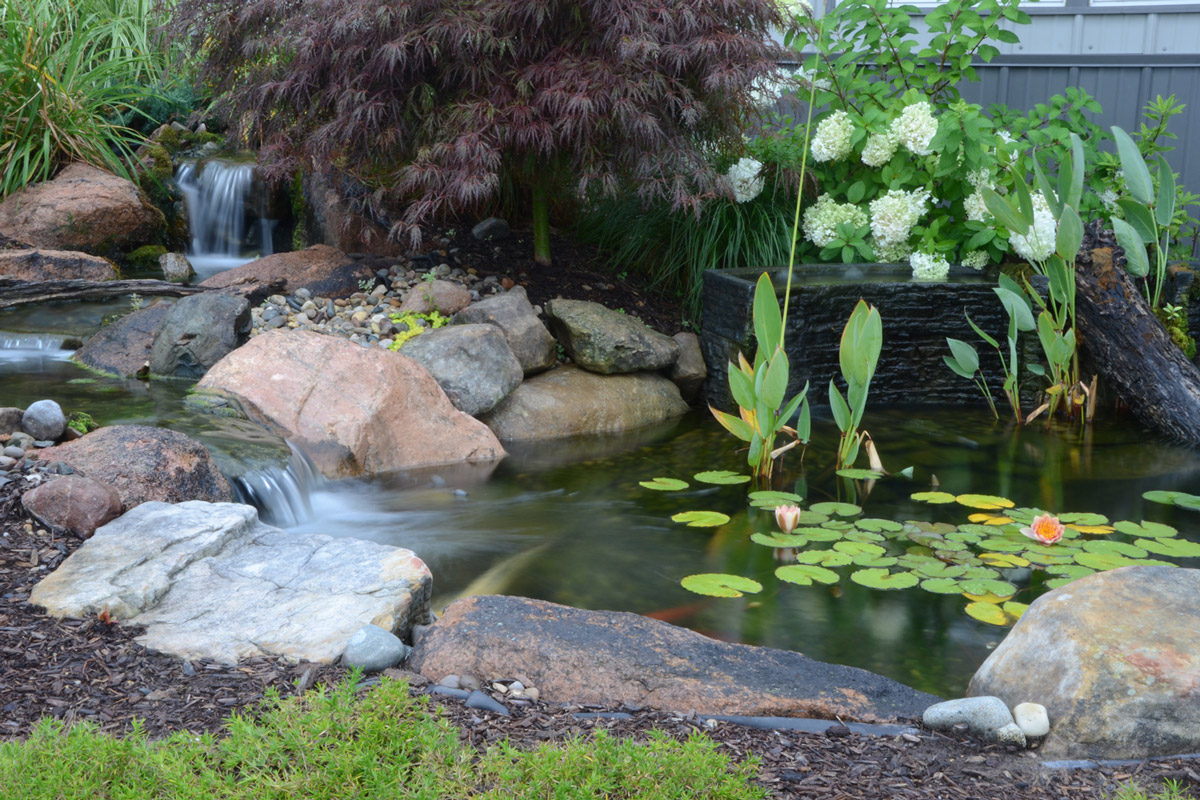Keeping your pond clean is essential.
But is it something only experts can do correctly?
The answer might surprise you: you can keep your pond clean like a pro. So the real question is: do you want to clean your own pond, or do you want a pro to do it? The truth is it’s really up to you!
In this article, we’re going to be focusing on:
- How to keep your Ecosystem Pond, Koi Pond, or Water Garden Pond balanced.
- What type of cleaning and maintenance these ponds need weekly and yearly.
Follow along to get the full scoop on DIY pond cleaning versus pond cleaning done by the pros.
Why Clean Your Pond?
If you own a backyard koi pond, you’ve probably scoured the internet trying to find the best way to balance your pond.
Maybe you’ve read dozens of articles or pond forums—some saying you need chemicals to keep your pond clean—others insisting you don’t.
Maybe you’re wondering:
- Should I clean my pond professionally or by myself?
- Do I need to use chemicals to clean my pond?
- How much will cleaning my pond cost?
- Is keeping my pond clean really that important?
Let’s take a look at what the professionals say.
Do I need to use chemicals to clean my pond?
It’s really quite simple.
A balanced pond is a clean pond.
You don’t need chemicals to clean your pond or to keep it clean.
Water flow and proper filtration are what really keep your pond water balanced and clean.
A Biological Pond Filter will remove unwanted nutrients from your pond and nitrogenize bacteria, making it a food source for fish and plants.
Fish, filters, and waterfalls help promote water flow, keeping your pond water naturally balanced.
Is keeping my pond clean really that important?
When it comes to the health of your pond water, aquatic plants, and fish, keeping your pond clean is a must.
Just like your garden or landscape, your pond plants and fish need a healthy environment to thrive, which means some maintenance is required.
But taking care of your pond is not the daunting task it might seem to be.
In fact, your Ecosystem, Koi, or Garden Pond will only need deep cleaning once a year in the spring.
Otherwise, we recommend cleaning your skimmer filter weekly as well as using your skimming net to remove debris from your pond’s surface weekly.
With a little work on your part, your pond will naturally do the rest.
Fish, plants, and a proper filter will keep your pond thriving until the following spring cleaning.
Should I clean my pond professionally or by myself?
Yes, we offer professional pond cleaning, but you can do it, too.
If it’s your preference and you have the right tools, you can do your own spring cleaning for your pond.
Getting a professional to clean your pond has many benefits, including saving time and avoiding the gunk that comes with pond cleaning.
However, if professional cleaning is out of your budget, we’ll get into the step-by-step pond cleaning process later.
Next, let’s talk about when you should clean your pond.
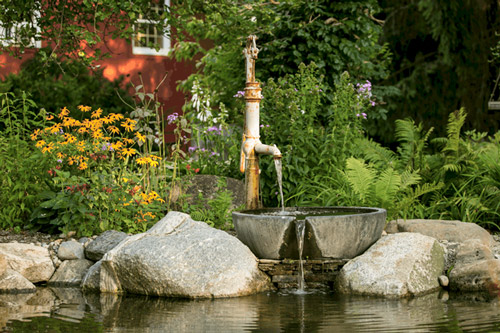
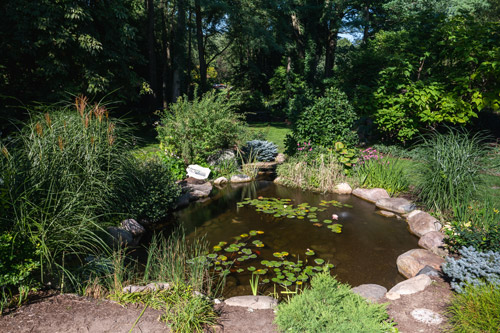
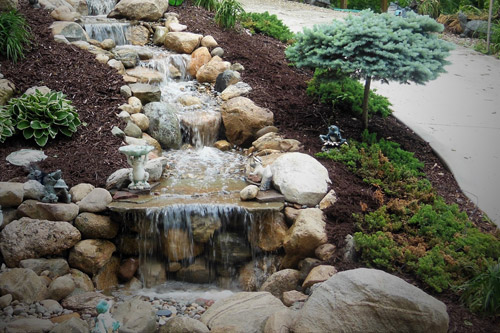
Spring Pond Cleanout–The Most Important Clean of the Year
The best time to clean your pond is in the spring before the water hits 55°F.
During the winter months, your pond’s ecosystem goes dormant.
So, a spring cleanout is essential to revive the natural cycle of your pond for the rest of the year.
Supplies you’ll need include:
- Professional Grade Skimmer Net
- Fish Net and Fish Container with netting on top
- Water Pump and Discharge Hose
- Pond Detoxifier
- SAB Stream and Pond Cleaner
- EcoBlast™ Contact Granular Algaecide (US Only)
- Maintain for Ponds (Beneficial bacteria)
- Wheelbarrow/Trash bags for Debris
- Shears for trimming back plants
- Power Washer
Now, let’s get into the step-by-step process DIYers can use for a proper pond cleaning.
Step-by-Step Pond Cleaning (DIY Style)
Once you have your supplies, you can move on to cleaning your pond like a pro.
You can watch a step-by-step pond cleaning video here or keep reading for the written step-by-step list.
- Remove the bubbler or heater you’ve used during the wintertime.
- Unplug the waterfall pump and disconnect the check valve from the return line, allowing the pump and bio falls to drain.
- Use the Professional Grade Skimmer Net to stir up and remove debris (leaves, small branches, algae, fine sediment, etc.).
- Once water is cleared of debris, start draining the pond (leave 6” of water). Use your existing water feature pump and a Discharge Hose or purchase a LSR Cleanout Pump and Discharge Hose for this step.
- Remove the filtration media from the filtration units and rinse thoroughly, using the pond water from the discharge hose.
- BONUS: Fill buckets with “old” pond water for your garden and flower beds or move the Discharge Hose multiple times to water your lawn. Your landscape will love the nutrient-packed water!
- Once pond is drained to 6”, use a Fish Net to catch and place fish in a large container filled with pond water while you clean the bottom of the pond. Add Air Stones to the container and cover container with netting so fish can’t jump out.
- Drain pond completely and remove debris.
- Set up pressure washer and start washing off rocks. Start at the “top” of your pond or water feature and work your way down, pumping out dirty water as you continue cleaning. Leave some algae on rocks as it helps balance the pond.
- Pump water out of Bio Falls and Skimmer and hose them down to clean.
- Continue to rinse down and remove debris from rocks and gravel. Cover any exposed lining with gravel.
- Place Filtration Media in the Bio Falls and reconnect the Waterfall/Pond Pump in the Skimmer. Check pump intake to make sure there’s no debris or solids stuck in it. Put filter mat, debris basket, and filter lid in place again.
- Replace any underwater lights if needed and IonGen™ Probe if necessary.
- Refill your pond with a garden hose and add Pond Detoxifier. This removes chlorine, chloramine, and ammonia, detoxifies heavy metals, and is safe for plants and fish.
- Once the pond has 1’ of fresh water, place fish in fish bags and allow bags to float on top of water for 15-20 minutes to acclimate fish before releasing them.
- After your pond water is above 55°F, you can add Maintain for Ponds (Beneficial bacteria). This will help balance your pond, reduce nitrite and ammonia, and reduce maintenance by keeping filters clean.
- Continue to add SAB Stream and Pond Cleaner, EcoBlast™ Contact Granular Algaecide (US Only), and Maintain as needed throughout the year and watch as your pond balances itself!
It’s probably obvious that a pond cleanout takes time, but since it’s only once a year, it’s well worth the effort!
If you’re not interested in the do-it-yourself process, you’ll appreciate having a professional do it for you. We’ll discuss that next.
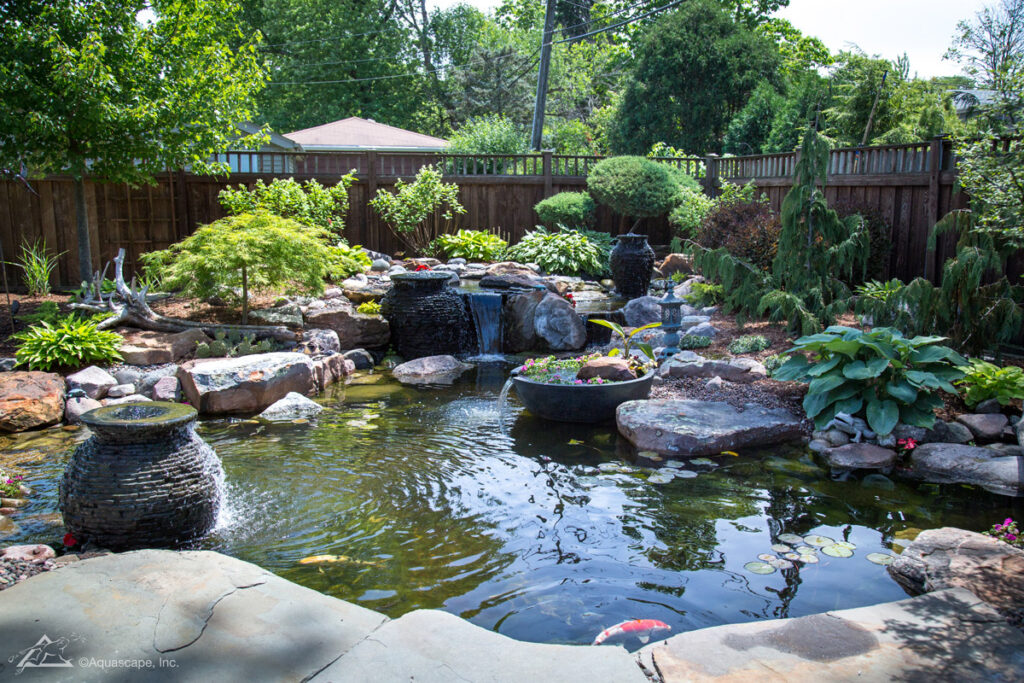
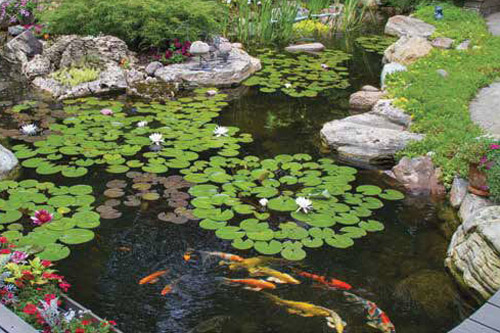
What’s Included in a Professional Pond Cleanout?
A professional pond cleanout is for those who have the budget for it and would like expert recommendations for what your pond needs for the rest of the year.
At Premiere, we’ll not only provide you with the thorough cleaning listed above, we’ll also:
- Catch issues before they become a big problem
- Assess the overall health of your pond, plants, and fish
- Safely handle fish so that less stress on them with changing environments
- Check pumps, filters, and other hardware for issues
- And most importantly, we’ll do the dirty work for you!
We train regularly to stay up to date with the latest and best aquascape techniques and our well-stocked vehicle means we have everything we need on hand when we come to clean your pond.
Then again, it’s up to you how you want to clean your pond and what you can afford!
Our annual spring pond cleaning starts at $1,000 and bi-weekly pond maintenance ranges from $3,000-$4,000 per year.
The Spring Pond Cleaning page is a great place to start if you want a quote for professional pond cleaning.
Whether you clean your pond yourself or get it professionally cleaned, we recommend cleaning your skimmer filter weekly and adding SAB Stream and Pond Cleaner, EcoBlast™ Contact Granular Algaecide (US Only), and Maintain as needed.
Still have questions?
We’ll summarize some frequently asked questions next.
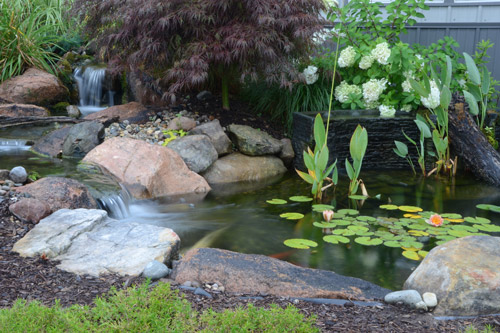
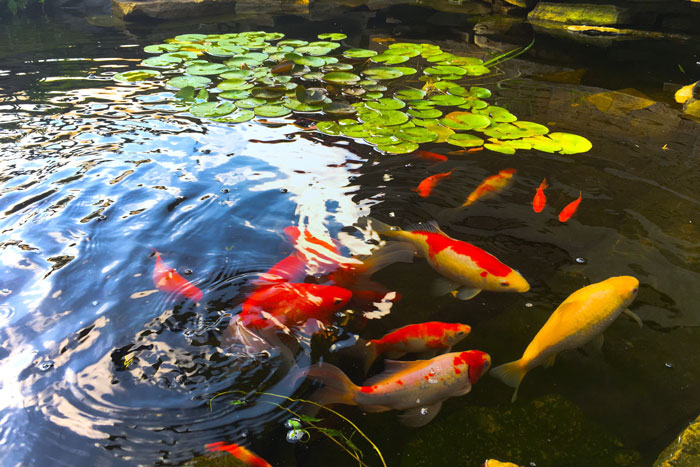
Common Pond Maintenance Questions Answered
If you have a list of questions you’ve been wanting to ask a pond pro, then look no further!
We’ve created a list of answers to give you clarity on all things related to year-round pond maintenance.
How much does pond maintenance cost?
Prices vary based on pond size and needs, but the starting cost for an annual pond cleanout is $1,000, and our bi-weekly pond maintenance ranges from $3,000 to $4,000 a year.
Should I clean my pond filter between cleanings?
Yes, even if you have had a professional pond cleanout, we recommend that you clean the pond skimmer filter at least once a week for best results.
Should I get a water test kit to check my pond water regularly?
No, a pond water test kit is not necessary because typical visual observations are usually enough input on the health of your pond water. A test kit is only needed in extreme situations.
Do I need to use chemicals to keep my pond water clean?
No, chemicals are not necessary to balance your pond. Proper water flow and filtration are all your pond needs to remain healthy. Beneficial bacteria (Maintain for Ponds) is needed throughout the year, but this is a pond product that is safe for pond plants, fish, and other wildlife.
Does filtration and aeration help keep pond water clean?
Absolutely. Clean water needs circulation, and a biological filter, aquatic plants, and fish help in the process of removing nutrients from water and creating water movement.
Can I keep my pond naturally balanced all year?
The short answer is…for the most part. In this climate, you can keep your pond naturally balanced during the warmer months. However, ecosystems go dormant in the winter, so a spring pond cleanout is essential to revive your pond’s ecosystem again.
Will adding plants to my pond help keep the water clean?
Yes, pond plants are very beneficial for the health of your pond water. Aquatic plants take nutrients out of water to protect against algae and plants like hyacinths and water lilies help bring shade to your pond.
Do fish make pond water dirty?
No, fish help make your pond water cleaner! Fish waste is filtered through the biological filter, turning into a food source for your pond plants. Additionally, fish naturally stir up pond pebbles and create movement that keeps pond water clean.
What supplies do I need to keep my pond clean?
Between spring pond cleanings we recommend staying stocked up on Beneficial Bacteria (Maintain), plant fertilizer, and a good skimmer net to remove debris. You can find all these supplies at the Premiere Aquascapes store!
Do all ponds require the same type of cleaning and maintenance?
Ecosystem, Koi Ponds, and Garden Ponds use the same type of maintenance and upkeep mentioned in this article. However, Natural Ponds require a different process.
Will a waterfall help keep pond water clean?
Yes! Waterfalls add beauty and sound to a water garden, producing highly oxygenated water, which results in less nutrients in your pond.
How do I adjust cleaning as seasons change?
Spring = deep cleaning; Summer = algae control; Fall = leaf removal; Winter = shut-down.
Do bigger ponds need more cleaning?
No, bigger ponds are more stable than a smaller body of water and can handle more time between cleanings.
Can I clean my own pond?
You can! Just follow the steps mentioned and use the right supplies.
Should I get a pro to do it?
If you’re short on time, don’t want to get dirty, or want a deep clean, getting a pro to clean your pond is worth it.
Why choose Premiere Aquascapes?
Expert care, custom plans, and a love for beautiful, balanced water features are just a few reasons to choose our services. We’re constantly learning about the best methods for building and maintaining water features, so give us a call today at 574-202-1636 if you’re ready for an exceptional spring pond cleanout!
Conclusion: Choose What Works for You
Want hands-off maintenance? We get it. Many of our clients start off as DIY pond cleaners but come back for our pond cleaning services the next year. You can start by calling us at 574-202-1636 today or scheduling a pond cleaning here.
If you love a good DIY project, then use the checklist we provided above and stop by the Premiere Aquascapes store for supplies!
Either way, a clean pond = a happy pond!
